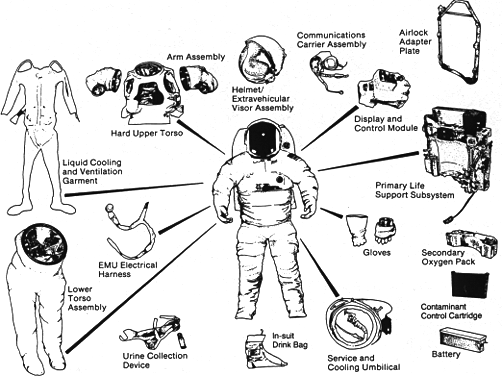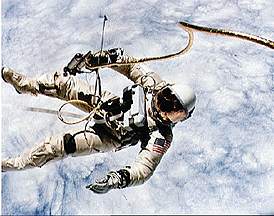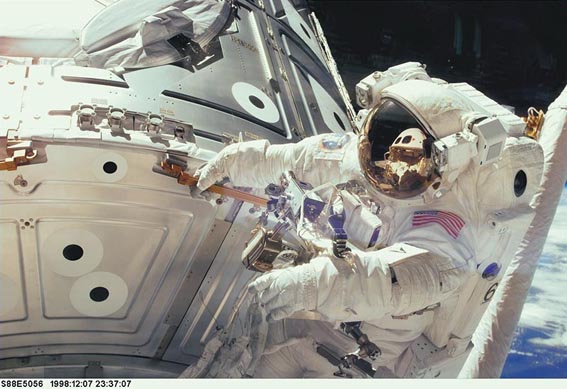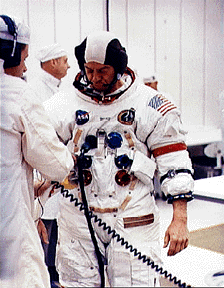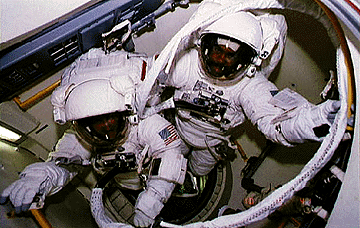|
|
|
|
|
Spacesuits are designed to keep an astronaut's blood from boiling, and give them oxygen to breathe, but they also protect them from many dangers or hazards. They give protection from bombardment by micrometeoroids or small objects flying through space. Also the spacesuit insulates the wearer from the temperature extremes of space. Without the Earth's atmosphere to filter the sunlight, the side of the suit facing the Sun would be hotter than boiling water, while the other side, exposed to darkness of deep space, would be colder than inside a freezer! |
|
The astronaut above is Ed White during an EVA (extra vehicular activity) on his space flight in 1965. Space suits, although they look very similar, have improved a lot since those days. To the right, you can see a modern astronaut working on the international space shuttle. |
|
|
The picture on the right shows Shepherd getting helped into his space suit. One thing that has not changed is that it is a lot more trouble than getting dressed in normal clothes! Scroll down to the bottom of the page, and look at all the bits and pieces that you have to get dressed into before you can go out into space! Astronauts of the space shuttle era have more than one wardrobe for space flight and what they wear depends on the job they are doing. During ascent and entry, each crewmember wears special equipment consisting of a partial-pressure suit, a parachute harness assembly, and a parachute pack. The suit would protect them if they had to parachute from the shuttle. It has inflatable bladders that fill it with oxygen from the orbiter and prevent the crewmember from blacking out. Without the suit pressing on the abdomen and the legs, the blood would pool in the lower part of the body and cause a person to black out as the spacecraft returns from microgravity (very little gravity) to Earth's gravity. |
|
|
|
Undertaking an EVA, means the astronaut must put on a full spacesuit. Important parts of that are:
|
